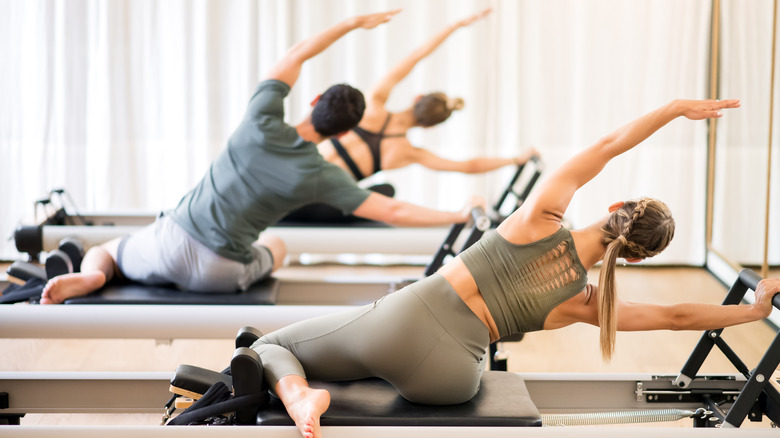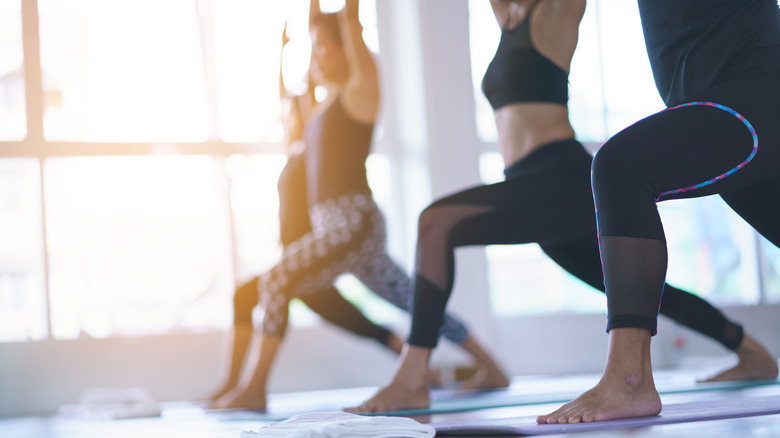Everything You Need To Know Before Trying A Hot Pilates Class
Hot Pilates is a low-impact, high-intensity workout that can help tone and strengthen your muscles. According to Healthline, hot Pilates is performed in a room heated to 95 degrees Fahrenheit with 40% humidity. As a result, hot Pilates is most likely going to make you sweat more than a regular Pilates class. While hot Pilates classes can certainly vary from location to location, classes for the full-body workout typically consist of a combination of core exercises and high-intensity interval training (HIIT).
Exercises you can expect to perform in a standard hot Pilates class include lunges, squats, mountain climbers, and leg lifts. Since these classes take place in a relatively hot and humid environment, they can increase your risk of dehydration and heat exhaustion. That's why it's important to stay hydrated and not push yourself too hard in the beginning. However, these risks are much higher for older adults and people with heart conditions. That's because the heat can actually put a strain on your cardiovascular system and raise your heart rate.
Benefits of hot Pilates
Elevating your heart rate during exercise can help you burn more calories. However, this has more to do with the HIIT element of hot Pilates than the external temperature. While the heat can certainly raise your heart rate, it shouldn't have much of an impact on younger or healthy adults. For instance, the squats and lunges in hot Pilates classes can result in excess post-exercise oxygen consumption (EPOC), which refers to the boost in metabolism that occurs after a workout is over (via Women's Health). This is linked to increased consumption of oxygen and ultimately causes you to burn more calories.
However, hot Pilates doesn't have any more health and fitness benefits than regular Pilates. As it turns out, there is little scientific evidence to suggest that performing Pilates in a hot environment is any better for you than performing it in an environment that's either cold or room temperature. "Some studies on hot yoga vs. thermo-neutral yoga have shown similar performance outcomes for both groups," Dr. Elizabeth Barchi, a sports medicine specialist at NYU Langone Sports Health, told Women's Health.


